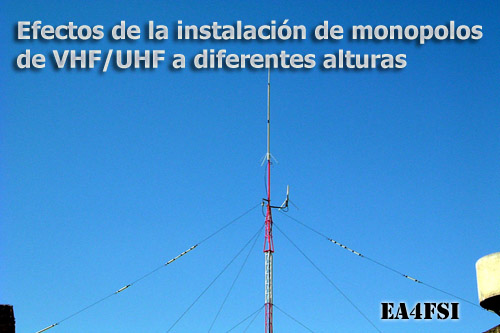Effects of the installation of VHF/UHF monopoles at different heights
Main → VHF/UHF Radio Resource Center → Effects of the installation of VHF/UHF monopoles at different heights |
![]() Este artículo también está disponible en Español (this article is also available in Spanish).
Este artículo también está disponible en Español (this article is also available in Spanish).
![]() Abstract:
Abstract:
The height over ground at which a monople antenna is installed may have implications on its efficiency of radiation because part of the energy radiated by the antenna is reflected on the ground and returns to the antenna. Depending on the height "h" at which the antenna is located over ground, the reflected wave will interfere positively or negatively with the radiated wave, causing the radiation resistance and the antenna gain to be different as the height over ground "h" changes. This height has influence in other parameters of a radio link, such as possible intersections of obstacles with the ellipsod in the first Fresnel zone. In this analysis, only parameters related with the proper antenna are considered.
Article first published on 21/12/2009.
1. Antenna model used for the analysis.
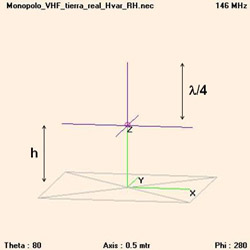
Fig.1. 1/4 wavelength monopole antena modeled in 4Nec2
Monopolo_L4_VHF_tierra_real_Hvar_RH.nec
For the VHF analysis, the antenna consists on a quarter-wavelength monopole and 4 radials of the same length at 90 degrees. It is designed for a central frequency of 146 MHz (L = 2,05 m) and located at a variable height "h" over ground. In the analysis, we consider heights up to 12 meters (0 < h <= 12 m) and an infinite ground of average type.
For the UHF analysis, the conditions are identical with the exception of the antenna, which is designed for a central frequency of 435 MHz (L = 0,7 m).
2. Effects on the standing wave ratio (SWR).
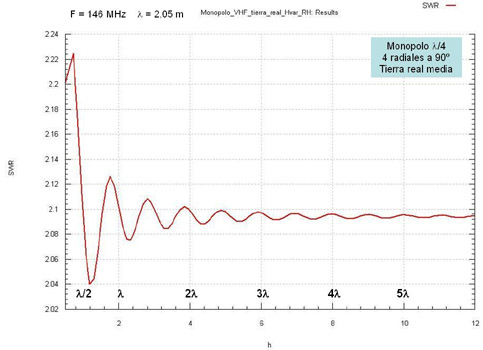
Fig.2. SWR vs height over ground (h) in meters for the VHF antenna
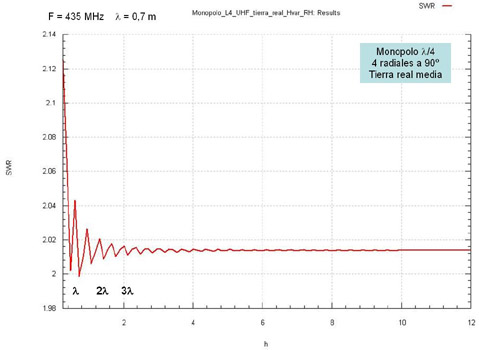
Fig.3. SWR vs height over ground (h) in meters for the UHF antenna
In both cases, the effects on the standing wave ratio are extremely low and only seen if the antenna is placed at a low height.
3. Effects on the antenna gain.
Video 1. Evolution of the vertical radiation pattern vs height over ground (h) in meters for the VHF antenna
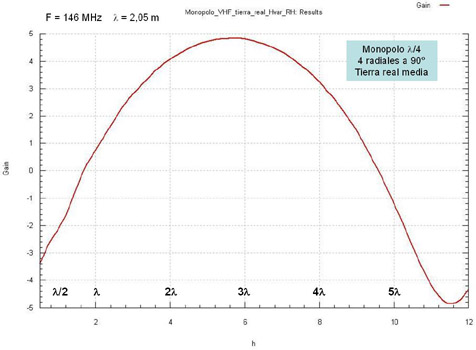
Fig.3. Antenna gain in dBi vs height over ground (h) in meters for the VHF antenna
It can be stated that the optimal height over ground for a monopole in the 2 meters band is around 6 meters (3 x wavelength). if the monopole is installed at 12 meters (6 x wavelength), the antenna will have 9 dB less of gain compared with the previous case. All gains have been calculated at a takeoff angle of 5 degrees. The gain curve is periodic.
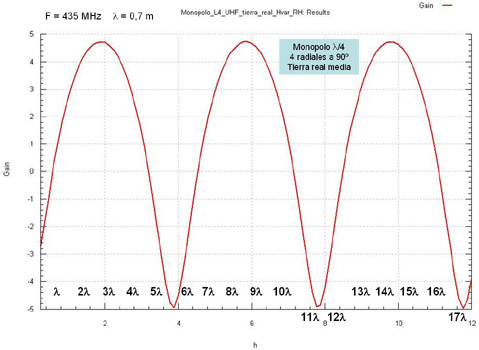
Fig.4. Antenna gain in dBi vs height over ground (h) in meters for the UHF antenna
In the 70 cm band and considering masts up to 12 meters, there are several heights of interest: 2 m, 6 m and 10 m, corresponding to 3 times, 9 times and 15 times the working wavelength. There are other heights to be avoided: 4 m, 8 m and 12 m, corresponding to 6 times, 12 times and 18 times the working wavelength. All gains have been calculated at a takeoff angle of 5 degrees. The gain curve is periodic.
4. Conclusions.
For a given height "h" of a L/4 monopole over ground in the VHF and UHF bands, working at a wavelength L, it can be stated that:
-
h = 3n x L -> maximum gain
-
h = 6n x L -> minimum gain
being "n" an integer number.
Video 2. Evolution of the 3D radiation pattern vs height over ground (h) in meters for the VHF antenna
Ismael Pellejero - EA4FSI |
 EA4FSI Home |
VHF/UHF antennas TOC |
VHF/UHF Central |

